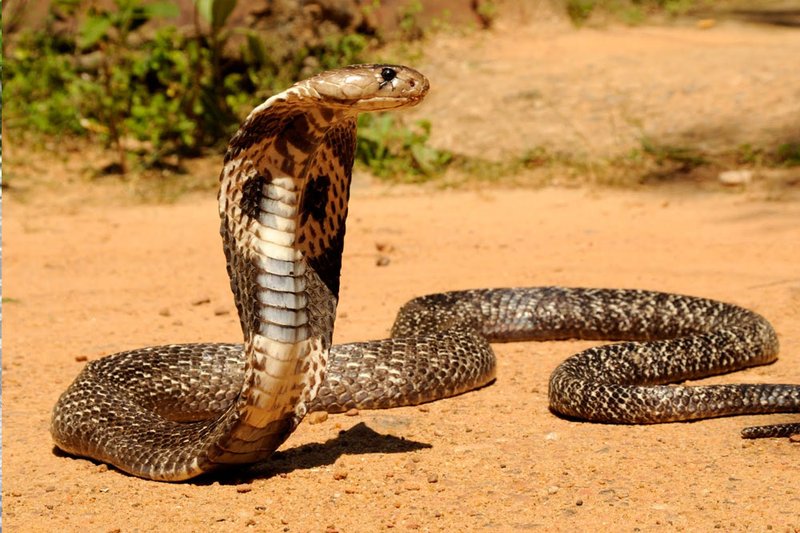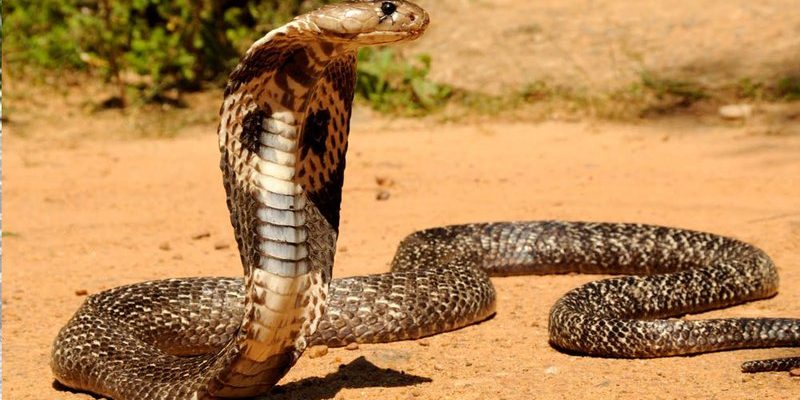
Let’s break it down together—what exactly should you do if you cross paths with one of these fascinating snakes? This isn’t about being scared but rather about being prepared. Imagine I’m sitting across from you with a cup of coffee, ready to share some friendly advice. Understanding how to act around an Indian Cobra can help you appreciate these creatures without putting yourself at risk.
Recognizing the Indian Cobra
First things first, let’s familiarize ourselves with the Indian Cobra. This snake, also known as the *Naja naja*, has a striking appearance that’s hard to miss. Its body is usually a mix of brown, yellow, and black, and when threatened, it spreads its hood to appear larger. Think of it like a peacock displaying its feathers—it’s all about intimidation.
The Indian Cobra can grow up to 6 feet long, and its bite can be lethal if not treated promptly. The good news? They typically shy away from humans, preferring to keep their distance. But if you ever do encounter one, knowing how to identify it correctly can help you stay calm and make the right decisions.
Don’t confuse the Indian Cobra with other snakes. It has a distinct, rounded head and large, round eyes. If you spot one, take a mental picture of its features. This way, if you encounter another snake in the future, you’ll know what you’re dealing with. Remember, not all snakes are dangerous!
Stay Calm and Assess the Situation
So, you’ve spotted an Indian Cobra. What’s next? The most important thing to do is to stay calm. I know it’s easier said than done, but panicking can lead to hasty decisions that could put you in danger. Take a moment to breathe and assess your surroundings.
Here’s the thing: cobras are often more interested in avoiding human contact than attacking. They might just be basking in the sun or hunting for food. If you’re lucky, it might slither away on its own before you even have to react.
While you’re assessing the situation, stand still. Don’t make any quick movements or try to get closer for a better look. This could provoke the snake. Instead, observe from a safe distance, around 10 to 15 feet away if possible. It’s all about being a good spectator in this wild drama!
Back Away Slowly
If the cobra seems to be staying put, the best course of action is to back away slowly. You might feel an urge to run, but that can trigger a chase response in snakes. Instead, move away using deliberate and steady movements. Imagine how you’d walk away from a potentially angry dog—you wouldn’t want to startle it, would you?
While you’re backing away, keep your eyes on the snake without staring directly into its eyes (which can be perceived as a threat). If you can, back away in the direction you came from, ensuring that you have a clear path. The goal is to give the cobra space to feel safe so it can often choose to leave without unnecessary confrontation.
Remember, when it comes to wildlife, safety isn’t just about avoiding bites—it’s about respecting their space.
Know the Signs of Aggression
Understanding the behavior of an Indian Cobra can prepare you for what happens next. They may show certain signs when they feel threatened or cornered. A snake that starts hissing, puffing up its hood, or swaying from side to side is likely feeling aggressive.
This is your cue! If you see these behaviors, take precautions to get away. Here’s a quick list of things to watch for:
- Hissing: A warning sign that it’s feeling threatened.
- Hood Spreading: This is the classic cobra pose, trying to intimidate.
- Swaying Movement: Often a sign that the snake is preparing to strike.
If you notice any of these signs, it’s best to increase the distance between you and the cobra. You’re not trying to outsmart it; instead, you’re giving it the space it needs to feel comfortable.
Seek Assistance if Necessary
If you find yourself in a situation where you feel cornered or if the cobra seems aggressive, don’t hesitate to seek help. Whether you’re in a national park or a rural area, there are usually park rangers or wildlife officials who know how to handle snakes safely.
If you’re with friends, communicate. Let them know there’s a cobra nearby and make sure they back away with you. You might even want to take a picture from a distance for identification purposes later—just don’t get too close!
If you have access to your phone, you can also call local wildlife services. They often have professionals trained in snake removal and can help relocate the cobra safely.
First Aid for Snake Bites
While we hope it never comes to this, it’s good to know what to do in case of a snake bite. If you or someone with you is bitten by an Indian Cobra, your first action should be to get medical help immediately. Cobra venom can be very serious, and timely treatment is crucial.
In the meantime, here are some first-aid steps to take:
- Stay Calm: It’s important to keep the victim calm to slow the spread of the venom.
- Immobilize the Affected Limb: Keep the bitten area still and below heart level if possible.
- Avoid Common Myths: Do not apply ice, cut the wound, or try to suck out the venom.
Instead, focus on getting the person to a hospital as quickly as you can. Antivenom is highly effective if administered promptly, and professionals will know the best course of action.
Leave No Trace: Respecting Wildlife
Finally, it’s essential to respect wildlife and their habitats. If you happen to see an Indian Cobra in the wild, consider yourself lucky! These creatures play an important role in the ecosystem, controlling rodent populations and maintaining a balance within their habitat.
Whenever you’re in the wilderness, practice good habits to minimize human impact. This includes staying on marked trails, disposing of waste properly, and keeping a safe distance from all wildlife. Remember, the wild is their home, and we’re just visitors.
By taking responsible actions, you help protect both yourself and the natural world around you.
Encountering an Indian Cobra in the wild can be a thrilling experience, but it’s also one that requires awareness and respect. By knowing how to recognize the snake, staying calm, and backing away slowly, you’ll increase your chances of a safe encounter. Remember to look out for signs of aggression and seek help if necessary.
Always be prepared when venturing into nature. The more you know, the better you can enjoy and respect its wonders. Next time you hit the trails, keep this advice in mind and feel confident in your ability to handle anything that comes your way—whether it’s an exotic snake or just a curious squirrel!

